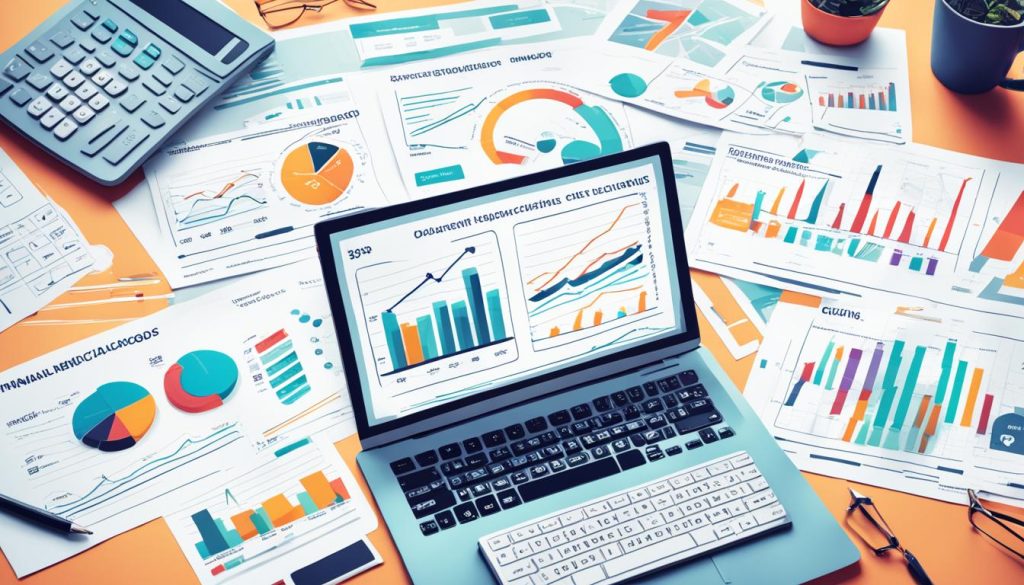- 1. The Importance of Financial Literacy in Today’s World
- 2. Leveraging Digital Technology for Financial Education
- 3. Key Reasons for Incorporating Digital Tools
- 4. Personalization through Digital Tools
- 5. Financial Education for Life
- 6. The Power of Digital Financial Literacy Programs
- 7. Accessibility and Convenience of Digital Financial Education
- 8. Personalized Learning with Technology
- 9. Real-Time Insights and Feedback
- 10. Empowering Financial Independence
- 11. Digital Delivery of Financial Education: Advantages and Challenges
- 12. Conclusion
- 13. FAQ
- 13.1 What is the importance of financial literacy in today’s world?
- 13.2 How can digital technology enhance financial education?
- 13.3 What are the key reasons for incorporating digital tools in financial literacy programs?
- 13.4 How can digital tools enable personalized learning in financial education?
- 13.5 What are the advantages and challenges of the digital delivery of financial education?
- 14. Source Links
Financial literacy is an essential skill in today’s complex and interconnected world, but it can be challenging to teach effectively. As our society evolves, so do the financial dynamics that college students must navigate. It is crucial that we leverage every tool at our disposal to help students develop these critical skills. One of the most powerful tools we can utilize is digital technology.
Today’s college students are digital natives who have grown up with technology. They are accustomed to using digital tools to manage various aspects of their daily lives, including their finances. According to a recent study, 95% of college students own a smartphone, and 73% use their phones to access financial accounts and manage their money. This demonstrates how students are embracing technology and utilizing digital tools to simplify their lives, including the management of their finances. As a result, financial literacy programs that incorporate digital tools are more likely to engage students and provide them with the skills they need to succeed financially.
Key Takeaways
- Financial literacy is an essential skill for navigating the complex financial landscape of today’s world.
- Digital technology offers powerful tools to enhance financial education and engage college students.
- College students are digital natives who readily embrace the use of digital tools to manage their finances.
- Incorporating digital tools into financial literacy programs can improve student engagement and skill development.
- Leveraging technology can help ensure that financial education remains relevant and accessible for the modern learner.
The Importance of Financial Literacy in Today’s World
As our world becomes more complex and interconnected, the finances that college students must navigate have also become increasingly intricate. It is essential that we help students develop the essential skills they need to navigate these financial complexities. Financial literacy is a critical skill that empowers students with the knowledge and tools required to make informed financial decisions, manage their money effectively, and achieve long-term financial stability and independence.
Navigating Financial Complexities
The modern financial landscape is marked by a myriad of challenges, from managing student loans and credit card debt to planning for retirement and investing in the stock market. Financial education for life is crucial in equipping students with the necessary expertise to make sound financial choices and avoid costly mistakes. By prioritizing financial literacy programs, we can ensure that students are prepared to thrive in today’s complex financial world.
Empowering Students with Essential Skills
Developing a strong money mindset and mastering personal finance management skills are vital for students to achieve long-term financial security and independence. Through comprehensive financial literacy programs, we can empower students with the knowledge and tools they need to budget effectively, build credit, save for the future, and make informed investment decisions. This holistic approach to financial education will set students on a path towards lifelong financial well-being.
Leveraging Digital Technology for Financial Education
Today’s college students are digital natives who have grown up with technology. They are accustomed to using digital tools to manage their daily lives, including their personal financial education for life. According to a recent study, 95% of college students own a smartphone, and 73% use their phones to access financial accounts and manage their budgeting skills. This demonstrates how students are embracing technology and utilizing digital tools to make their lives easier, including managing their personal finance management.
Digital Natives: College Students and Technology
As a result, financial literacy programs that incorporate digital tools are more likely to engage students and provide them with the skills they need to succeed financially. By leveraging digital technology, we can create financial education experiences that are tailored to the needs and preferences of this digital-savvy generation, fostering a positive money mindset.
Embracing Digital Tools for Money Management
Today’s college students are comfortable using technology to manage their finances, from tracking spending to accessing financial accounts. By incorporating digital tools into financial education programs, educators can create engaging and interactive experiences that resonate with this tech-savvy audience, empowering them to develop the essential skills needed to achieve long-term financial success.

Key Reasons for Incorporating Digital Tools
As the world becomes increasingly digitized, incorporating digital tools into financial education programs is crucial for engaging and empowering students. There are several key reasons why financial literacy initiatives must embrace the power of technology:
Creating Engaging and Interactive Experiences
Digital tools allow educators to design engaging, interactive learning experiences that cater to the preferences and learning styles of today’s digital-savvy students. From mobile apps that track spending habits to online simulations that mimic real-life financial decision-making, these innovative solutions make financial education more intuitive and enjoyable for learners.
Providing Immediate Feedback
Technology enables financial literacy programs to offer students immediate feedback on their progress and performance. Through interactive quizzes, personalized dashboards, and real-time alerts, digital tools provide learners with the insights they need to identify areas for improvement and make informed decisions about their personal finance management.
Ensuring Accessibility
One of the key benefits of incorporating digital tools is the ability to make financial education more accessible to a wider audience. With the ubiquity of smartphones and internet connectivity, students can access financial resources and learning materials anytime, anywhere, ensuring that financial literacy is not limited by geographic location or socioeconomic status.
By leveraging the power of digital technology, financial literacy programs can create an engaging, interactive, and accessible learning experience that empowers students with the knowledge, skills, and tools they need to achieve long-term financial well-being.
Personalization through Digital Tools
Digital tools also enable personal finance management and financial literacy programs to be more personalized and tailored to the needs of individual students. Online assessments and quizzes can identify the areas where students need the most help and create customized learning paths to improve student success in those areas. This personalized approach enhances engagement and increases the effectiveness of money mindset education initiatives, empowering students to take control of their finances confidently.
“By leveraging digital technology, we can create financial education experiences that are tailored to the needs and preferences of this digital-savvy generation.”
Through advanced algorithms and data analytics, financial apps and platforms can analyze spending habits, identify areas for improvement, and offer personalized recommendations for achieving financial goals. This approach not only enhances engagement but also increases the effectiveness of financial literacy programs, empowering students to take control of their finances with confidence.
Financial Education for Life
To build effective
financial literacy programs
that prioritize digital tools, educators and organizations should consider the following strategies:
Building Financial Literacy Programs with Digital Tools
Incorporating cutting-edge digital technologies, such as mobile apps, interactive web-based platforms, and gamified learning experiences, can create engaging and accessible financial education for life. By leveraging the power of these tools, programs can provide personalized guidance, real-time feedback, and immersive learning environments to help individuals develop essential budgeting skills, understand investment strategies, manage credit and debt, and build a strong foundation for long-term wealth building.
Collaborating with Technology Partners
Establishing partnerships with innovative fintech companies and technology providers can enable financial literacy programs to harness the latest advancements in personal finance management and money mindset tools. These collaborative efforts can result in the development of seamless, user-friendly digital solutions that cater to the needs and preferences of diverse learners, from college students to working professionals.
Conducting Needs Assessments
Before implementing digital financial education initiatives, it is crucial to conduct thorough needs assessments to understand the specific challenges, pain points, and learning preferences of the target audience. This data-driven approach ensures that the program design and digital tools employed are tailored to the unique requirements of the community, maximizing engagement and, ultimately, the effectiveness of the financial literacy programs.
Incorporating Gamification
Leveraging the principles of gamification, financial literacy programs can create immersive, interactive experiences that make learning about personal finance concepts, retirement planning, tax planning, and insurance literacy engaging and rewarding. By incorporating game-like elements, such as points, badges, and leaderboards, these programs can foster a sense of competition and achievement, motivating learners to actively participate and apply the knowledge gained.
Leveraging Social Media
Social media platforms can serve as powerful tools for disseminating financial education content, fostering online communities, and facilitating peer-to-peer learning. By leveraging social media, financial literacy programs can reach a wider audience, share relatable and digestible financial tips, and encourage discussions around debt management, credit counseling, and estate planning. This approach can help normalize conversations around money and empower individuals to take control of their financial education for life.

The Power of Digital Financial Literacy Programs
Digital tools are not a cure-all, but when used correctly, they can be a powerful tool for financial education for life and personal finance management. They allow educators to create engaging, interactive experiences that provide immediate feedback and are accessible to a wider audience. By using digital tools, we can help ensure that students are equipped with the skills they need to navigate the complex financial landscape of the 21st century and develop a strong money mindset.
The integration of digital technology into financial literacy programs has revolutionized the way individuals approach personal finance. These innovative tools provide a dynamic and personalized learning experience, empowering students to take control of their financial futures. From budgeting apps to interactive simulations, digital solutions offer a comprehensive approach to developing the essential skills required for long-term financial well-being.
Leveraging the power of financial education for life, these digital platforms foster a deeper understanding of complex financial concepts, such as investment strategies, credit management, and wealth building techniques. By seamlessly incorporating these elements, personal finance management becomes more accessible, engaging, and effective for learners of all backgrounds and ages.
| Key Benefits of Digital Financial Literacy Programs | Outcomes for Learners |
|---|---|
|
|
By harnessing the power of digital tools, financial literacy programs can create a more personalized and engaging learning experience that resonates with today’s learners. This holistic approach empowers individuals to develop a strong money mindset and the essential personal finance management skills needed to navigate the complex financial landscape of the 21st century.
Accessibility and Convenience of Digital Financial Education
One of the key benefits of technology in enhancing financial literacy is its accessibility and convenience. With the proliferation of smartphones and internet connectivity, people can access financial resources and educational materials from anywhere, at any time. Whether watching instructional videos on budgeting, participating in online courses, or using interactive apps to track expenses, technology makes financial education more accessible and engaging. This flexibility allows students to learn at their own pace and ensures that financial literacy is accessible to all, regardless of their location or schedule.
Anytime, Anywhere Learning
The ubiquity of digital devices and the internet has revolutionized the way people can access and learn about personal finance. Individuals can now engage with financial education content and tools whenever and wherever it is convenient for them. This anytime, anywhere learning approach empowers people to develop their financial education for life skills at their own pace, fitting it seamlessly into their daily routines.
Reaching Wider Audiences
The accessibility of digital financial education platforms also allows for the expansion of financial literacy programs to reach a wider and more diverse audience. People who may have previously been unable to access in-person financial education workshops or classes can now participate in online courses, webinars, and interactive learning experiences. This democratization of personal finance management knowledge helps to ensure that financial education is available to individuals from all backgrounds and circumstances, promoting greater financial inclusion and empowerment.
Personalized Learning with Technology
Technology also enables personalized learning tailored to the needs and preferences of individual personal finance management students. Through advanced algorithms and data analytics, financial apps and platforms can analyze spending habits, identify areas for improvement, and offer personalized recommendations for achieving financial goals. This approach enhances engagement and increases the effectiveness of financial literacy programs, empowering students to take control of their finances confidently.
Data Analytics and Tailored Recommendations
By leveraging data analytics, digital financial tools can provide students with personalized insights and recommendations to improve their money mindset and financial well-being. These platforms analyze individual spending patterns, savings habits, and financial goals to offer tailored guidance and action plans. This personalized approach ensures that students receive the specific support they need to overcome their unique financial challenges and make progress towards their financial objectives.
Engaging Through Gamification
To further enhance the personalized learning experience, financial education platforms are increasingly incorporating elements of gamification. By introducing game-like features, such as interactive simulations, challenges, and rewards, these tools make the process of learning personal finance management skills more engaging and enjoyable for students. This gamified approach not only increases student motivation and participation but also helps reinforce crucial financial concepts through hands-on, interactive experiences.

Real-Time Insights and Feedback
Technology provides real-time insights and feedback on financial planning, enabling individuals to make informed decisions. Whether receiving instant notifications about account balances, monitoring spending patterns in real-time, or setting up alerts for upcoming bills, technology empowers people to stay organized and in control of their budgeting skills, personal finance management, and finances 24/7. This real-time feedback loop fosters greater awareness and accountability, resulting in smarter financial choices.
Instant Notifications and Alerts
Instant notifications and alerts from financial apps and platforms allow individuals to stay on top of their finances by providing real-time updates on account balances, upcoming bills, and spending trends. This heightened level of visibility and transparency helps people make more informed decisions, avoid late fees, and better manage their financial literacy programs.
Fostering Financial Awareness and Accountability
The immediate feedback and insights provided by technology-driven financial tools cultivate a greater sense of financial awareness and accountability. By clearly visualizing their spending patterns, income, and savings, individuals are empowered to take control of their financial situation and make more responsible choices. This heightened level of financial consciousness can lead to improved budgeting skills, reduced debt, and better overall personal finance management.
Empowering Financial Independence
Ultimately, the role of technology in improving financial literacy is about empowering individuals to achieve financial independence and security. By equipping them with the knowledge, tools, and resources needed to make sound financial decisions, technology enables the building of a solid financial foundation. Digital tools and platforms can provide access to comprehensive financial education and empower individuals from all walks of life to take control of their financial futures, ultimately leading to greater financial well-being and independence.
Building a Solid Financial Foundation
Through personalized digital financial education, individuals can develop the essential budgeting skills, retirement planning strategies, and investment strategies necessary to create a strong financial foundation. This foundation empowers them to effectively manage their credit, reduce debt, plan for tax obligations, and secure their financial future through insurance literacy and estate planning. By fostering wealth building techniques and personal finance management skills, technology-driven financial literacy programs equip individuals with the knowledge and tools to achieve long-term financial independence.
Equipping Individuals with Knowledge and Tools
Through innovative digital platforms, individuals can access a wealth of financial education for life, including personalized guidance on debt management, credit counseling, and developing a positive money mindset. These comprehensive financial literacy programs leverage the power of technology to provide tailored insights, interactive simulations, and real-time feedback, empowering users to make informed decisions and build wealth building techniques for sustainable financial security.

Digital Delivery of Financial Education: Advantages and Challenges
The digital delivery of financial education offers several advantages, but it also presents some challenges. On the positive side, digital tools can improve access to financial information and advice, making it more readily available and convenient for individuals to access. They can also improve access to financial education and training, allowing for more flexible and personalized learning experiences.
Improving Access to Financial Information and Advice
By leveraging digital platforms, individuals can easily access a wealth of financial information and professional advice at their fingertips. This improved accessibility empowers them to make informed decisions and proactively manage their personal financial education for life.
Improving Access to Training
Digital tools enable the delivery of personal finance management training and educational programs in a flexible, on-demand format. This allows individuals to access the resources they need at their convenience, whether it’s through online courses, interactive tutorials, or virtual coaching sessions.
Developing Skills and Confidence
The interactive and engaging nature of digital financial literacy programs can help individuals develop essential skills and build their confidence in managing their finances. From budgeting apps to investment simulators, these tools provide a safe, experiential learning environment where users can practice and hone their money mindset and financial decision-making abilities.

Conclusion
In conclusion, the role of digital tools in enhancing financial education is undeniable. By leveraging the power of technology, we can create engaging, interactive, and personalized financial literacy programs that empower individuals with the crucial knowledge, skills, and tools needed to achieve long-term financial independence and security.
Through the integration of digital technologies, we can revolutionize the way individuals approach their personal finances, from developing essential budgeting skills to navigating complex investment strategies, credit management, and debt reduction. These digital financial education resources can also address crucial areas such as tax planning, insurance literacy, estate planning, and wealth building techniques, equipping individuals with a comprehensive understanding of personal finance management.
As we continue to witness the rapid evolution of technology, it is imperative that we harness its potential to bridge the financial literacy gap and empower individuals from all walks of life to take control of their financial futures. By seamlessly blending digital tools with robust financial education programs, we can foster a money mindset that prioritizes financial literacy and empower the next generation to achieve their wealth-building aspirations.
FAQ
What is the importance of financial literacy in today’s world?
Financial literacy is an essential skill that empowers individuals with the knowledge and tools to navigate the complex financial landscape, make informed decisions, and achieve long-term financial stability and independence.
How can digital technology enhance financial education?
Digital tools and platforms can create engaging, interactive, and personalized financial literacy programs that cater to the needs and preferences of tech-savvy students, improving accessibility, feedback, and overall effectiveness of financial education initiatives.
What are the key reasons for incorporating digital tools in financial literacy programs?
Digital tools allow for the creation of engaging, interactive experiences, provide immediate feedback, and ensure accessibility to a wider audience, which are essential for enhancing the effectiveness of financial education.
How can digital tools enable personalized learning in financial education?
Through advanced data analytics and algorithms, digital tools can analyze individual spending habits and financial needs, and offer personalized recommendations and learning paths, thereby enhancing engagement and the overall effectiveness of financial literacy programs.
What are the advantages and challenges of the digital delivery of financial education?
The digital delivery of financial education can improve access to financial information, advice, and training, while also helping individuals develop financial skills and confidence through interactive and tailored learning experiences. However, it also presents challenges related to ensuring the quality and reliability of digital resources.
Source Links
- https://www.igradfinancialwellness.com/blog/why-digital-tools-are-essential-for-successful-financial-literacy-programs
- https://www.linkedin.com/pulse/role-technology-improving-financial-literacy-layup-technologies-pw8lf
- https://www.oecd.org/financial/education/Digital-delivery-of-financial-education-design-and-practice.pdf
